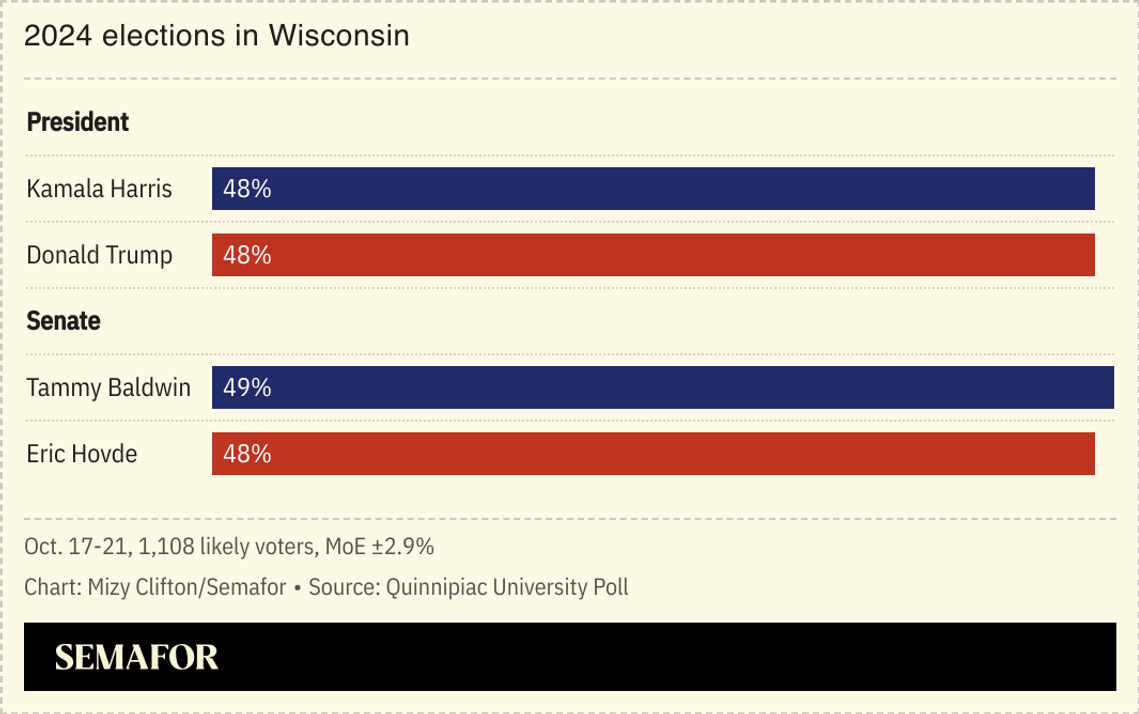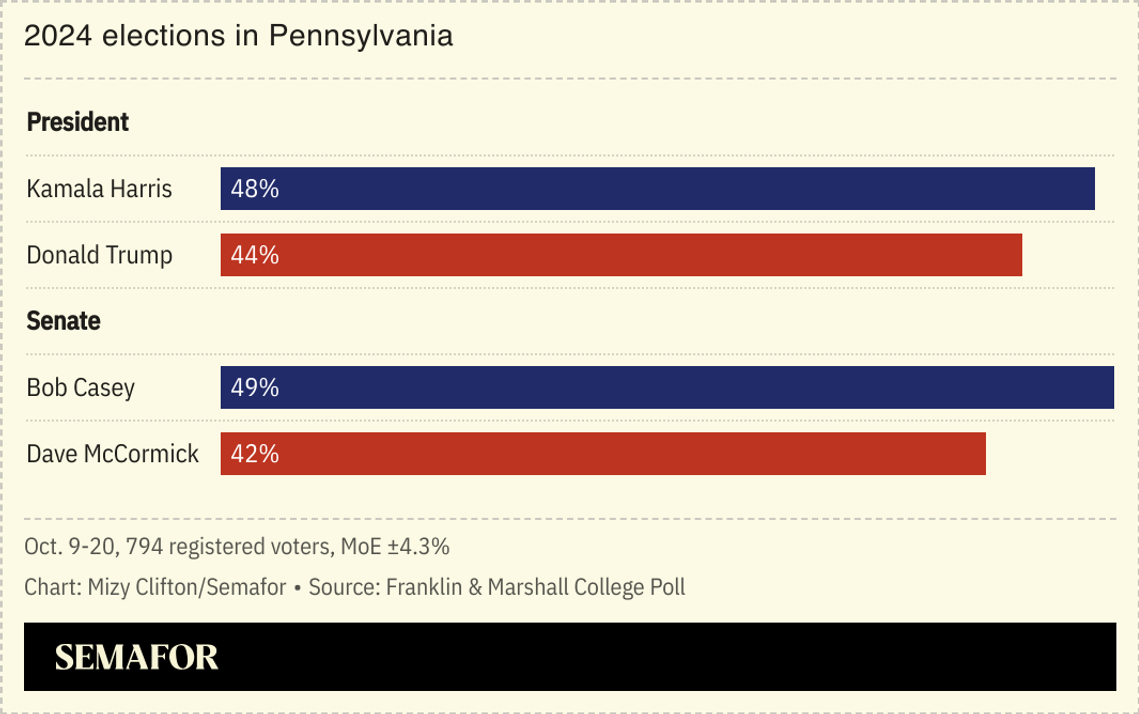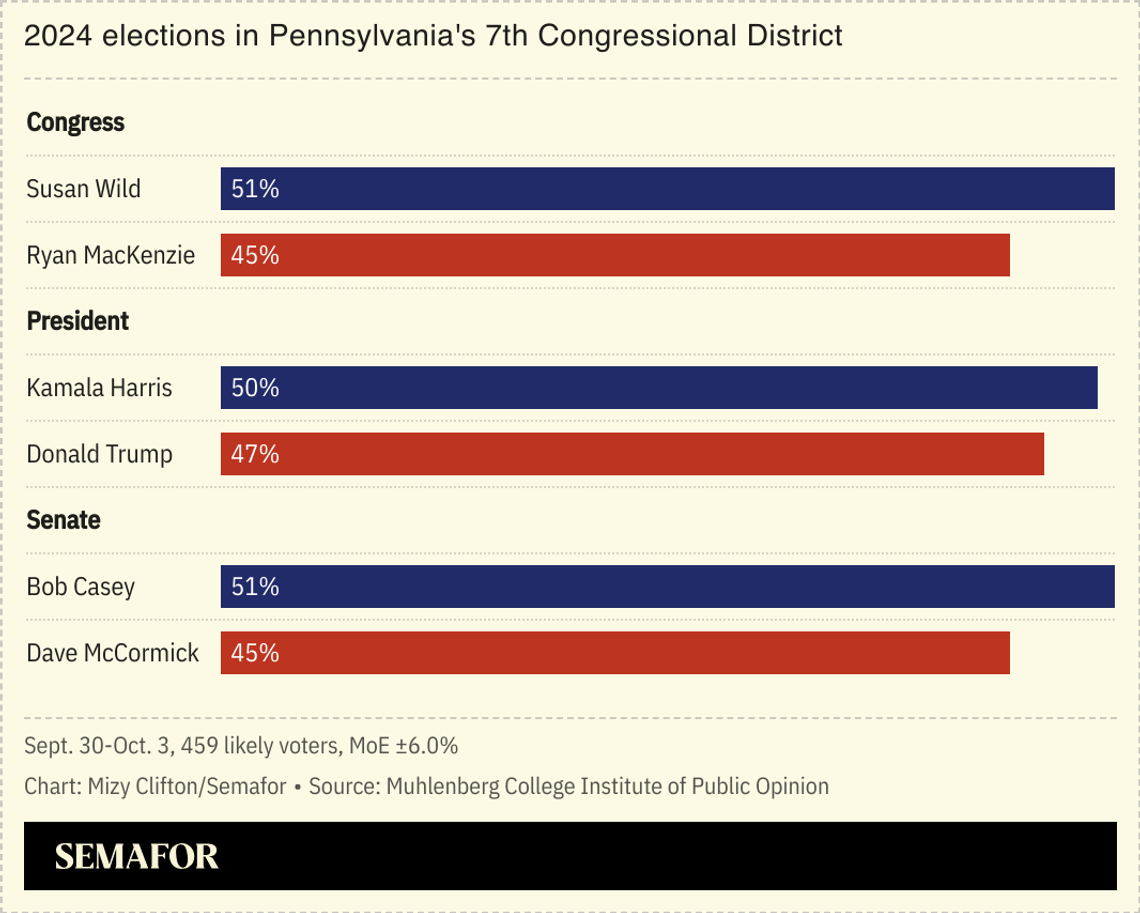 Polls Battleground state polling has remained tight for two weeks, with slight movement toward Donald Trump, and with Harris giving back some of the gains she’d made in her favorable ratings. It’s had no major effect on Quinnipiac’s numbers, as Harris has closed some of the gap with Trump on the economy. Republicans argued this week that Baldwin was distancing herself from Harris, pointing to a new ad that mentions how she got Donald Trump to sign her Build America amendment into law. She is still winning slightly more Trump voters than Harris: Harris gets 3% of Republicans, and Baldwin gets 7%.  The “likely voter” screen, which pollsters use to narrow down a sample to the voters most intent on turning out, is telling us widely different stories this year. Some national and state polls show the most frequent voters breaking for Harris, in line with the Democrats’ strategy of converting the college-educated moderates who never skip elections. F&M found the exact opposite in Pennsylvania — the most passionate voters support Trump, by a 1-point margin, and narrow Casey’s lead to 1 point. Among all registered voters, Harris has been whittling down Trump’s advantages on the economy (a 6-point lead, down from 11 points in September).  Yes, another Pennsylvania poll — an older one, which wrapped up right after the vice presidential debate, before any of the movement toward Trump seen by pollsters last week. But it points to some continued strength for Democrats in House races, which has shown up in both parties’ polling. At the end of the 2020 campaign, pollsters found the same thing happening, and over-estimated the final Democratic vote in key districts. If that’s not the case right now, Harris and Casey are running ahead of Joe Biden’s 2020 vote and John Fetterman’s 2022 vote in this northeast Pennsylvania district; Harris is winning Northampton County, which went to the winner in 2016 and 2020, by slightly more than Biden. Ads Missourians for Constitutional Freedom/YouTube Missourians for Constitutional Freedom/YouTube - Missourians for Constitutional Freedom, “Always.” Campaigns for abortion rights amendments, or for Democrats trying to ride the issue, tend to focus on women who want to exercise that right only in extreme circumstances. The testimonial here is from a church-going Black woman who’ll vote for legal abortion, overturning the state’s current law, because she knows someone who got an abortion after a rape. “These decisions should be between a woman and her God,” she says, thumbing through a Christian devotional.
- Preserve America PAC, “Insane.” The Trump campaign’s three ads about Harris’ support for gender medicine in prison have been complemented by PAC ads, going after the same topic with their own spins. PAPAC’s ads use straight-to-camera testimonials of people who can’t believe that Harris supports that spending for prisoners and illegal immigrants “now, while Americans struggle” — “not just liberal, it’s insane.” Each ad ends with the new PAC’s 2024 slogan, that “Kamala Harris can never be president.”
- Americans for Contraception, “Protect Our Freedoms.” Democrats introduced a Right to Contraception Act this spring, knowing that Republicans would block it in the Senate and deny it any vote in the House. One downstream effect: This group and its barrage of ads, which feature actors playing worried, normal people who can’t believe that their representative (here, New York Rep. Mike Lawler) haven’t signed on yet. “As a parent, you worry about your kid’s future” says a shocked, unidentified dad.
Scooped! I spent Labor Day weekend in North Carolina, but didn’t head to “Flagstock,” the party thrown with the donations a UNC-Chapel Hill frat received after its members guarded a flagpole so Old Glory could replace the Palestinian flag. Politico’s Alex Keeney showed up, and got a good hook to explain a major 2020 trend — frustrated young men moving right, rejecting feminism and the deprecating treatment of men in work and pop culture. It’s not unique to America, but I was waiting for a good stateside treatment of the story. Next  - 11 days until the 2024 presidential election
- 53 days until the Electoral College votes
David RecommendsOne of my clearest memories from 2020 was formed after the presidential election, when I headed to Georgia to cover the state’s dual Senate runoffs. In two days of reporting, I couldn’t find a Republican voter who believed, 100%, that Joe Biden had won the election. I found many who assumed that some deus ex machina would keep Biden from taking office. And when Donald Trump came to campaign for the GOP candidates, he took the same position. That story has truly never ended, and Jim Rutenberg’s deeply reported look in the New York Times at what’s happened to election officials in swing states ahead of this election tells you just how many officials, who are about to preside over the count, believe that anything but a Trump win would be fraudulent. |